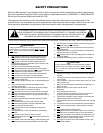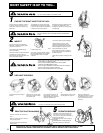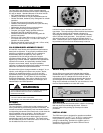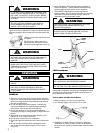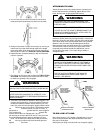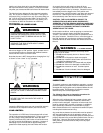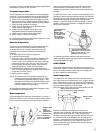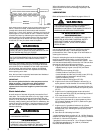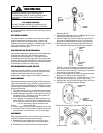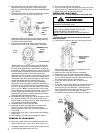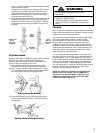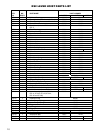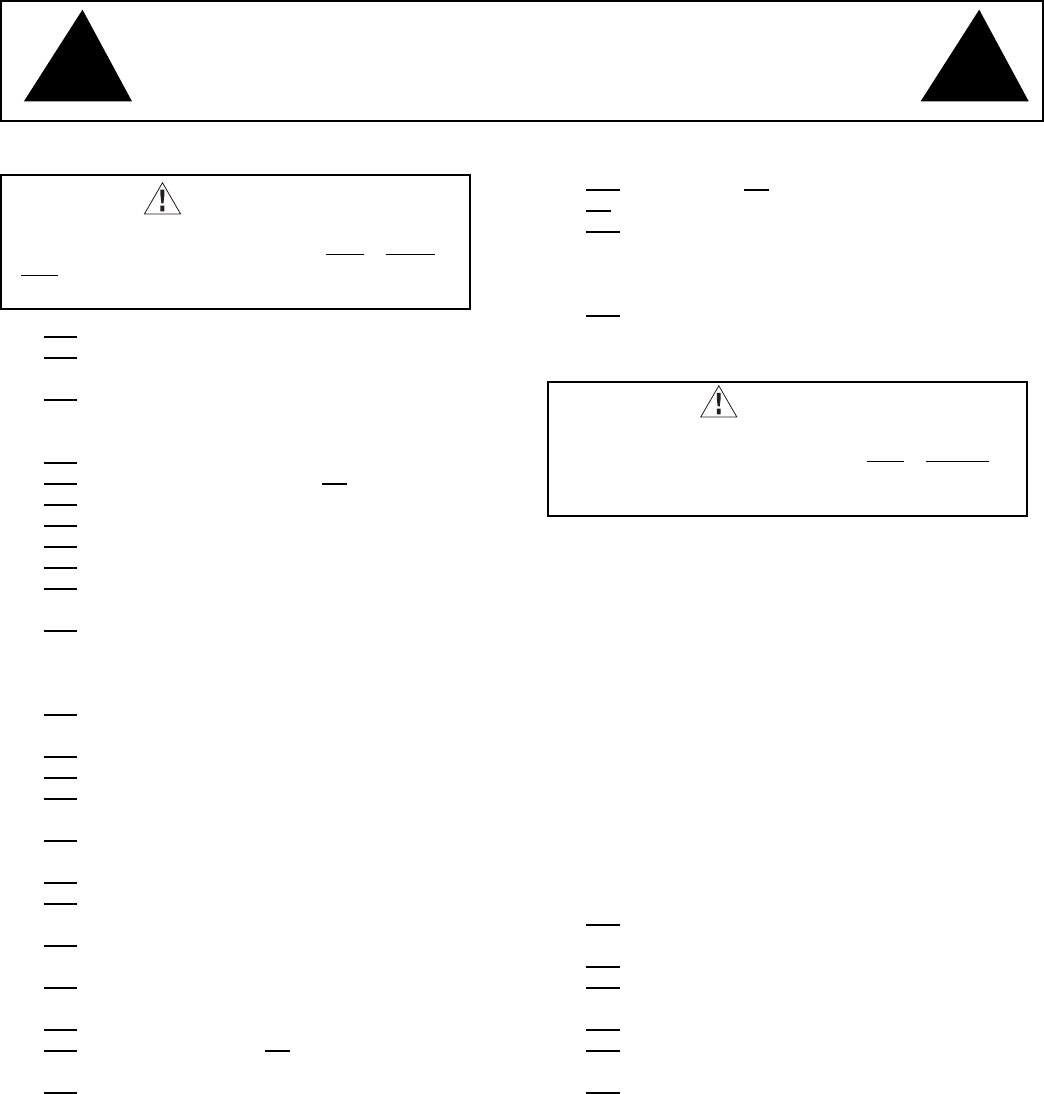
ii
SAFETY PRECAUTIONS
Each Yale RS2 Manually Lever Operated Hoist is built in accordance with the specifications contained herein and at
the time of manufacture complies with our interpretation of applicable sections of *ASME B30.21, *ANSI/ASME HST-
3M and the Occupational Safety and Health Act-1970.
The safety laws for elevators and for dumbwaiters specify construction details that are not incorporated in Yale
industrial hoists. We recommend the use of equipment that meets state and national safety codes for such use. Yale
Hoists cannot be responsible for applications other than those for which Yale equipment is recommended.
THIS SYMBOL POINTS OUT IMPORTANT SAFETY INSTRUCTIONS WHICH IF NOT FOLLOWED
COULD ENDANGER THE PERSONAL SAFETY AND/OR PROPERTY OF YOURSELF AND OTHERS.
READ AND FOLLOW ALL INSTRUCTIONS IN THIS MANUAL AND ANY PROVIDED WITH THE
EQUIPMENT BEFORE ATTEMPTING TO OPERATE YOUR YALE LEVER HOIST.
! !
*Copies of these standards may be obtained from ASME Order Department, 22 Law Drive, Box 2300, Fairfield, NJ 07007-2300.
1. NOT operate a malfunctioning or unusually performing hoist.
2. NOT
operate the hoist until you have thoroughly read and
understood this Operating, Maintenance and Parts Manual.
3. NOT
operate a hoist which has been modified without the
manufacturer’s approval or certification to be in conformity with
applicable OSHA regulations.
4. NOT
lift or pull more than rated load for the hoist.
5. NOT
use damaged hoist or hoist that is Not working properly.
6. NOT
use hoist with twisted, kinked, damaged, or worn load chain.
7. NOT
operate with any lever extension (cheater bar).
8. NOT
attempt to “free-chain” the hoist while a load is applied.
9. NOT
use the hoist to lift, support, or transport people.
10. NOT
lift loads over people and make sure all personnel remain
clear of the supported load.
11. NOT
attempt to lengthen the load chain or repair damaged load
chain.
12. Protect the hoist’s load chain from weld splatter or other
damaging contaminants.
13. NOT
operate hoist when it is restricted from forming a straight
line from hook to hook in the direction of loading.
14. NOT
use load chain as a sling or wrap load chain around load.
15. NOT
apply the load to the tip of the hook or to the hook latch.
16. NOT
apply load unless load chain is properly seated in the chain
wheel(s) or sprocket(s).
17. NOT
apply load if bearing prevents equal loading on all load
supporting chains.
18. NOT
operate beyond the limits of the load chain travel.
19. NOT
leave load supported by the hoist unattended unless
specific precautions have been taken.
20. NOT
allow the chain or hook to be used as an electrical or
welding ground.
21. NOT
allow the chain or hook to be touched by a live welding
electrode.
22. NOT
remove or obscure the warnings on the hoist.
23. NOT
operate a hoist which has Not been securely attached to a
suitable support.
24. NOT
operate a hoist unless load slings or other approved single
attachments are properly sized and seated in the hook saddle.
25. NOT
lift loads that are Not balanced and that the holding action is
Not
secure, taking up slack carefully.
26. NOT
operate a hoist unless all persons are and remain clear of
the supported load.
27. Report malfunctions or unusual performances of a hoist, after it
has been shut down until repaired.
28. NOT
operate a hoist on which the safety placards or decals are
missing or illegible.
29. Be familiar with operating controls, procedures, and warnings.
1. Maintain a firm footing or be otherwise secured when operating
the hoist.
2. Check brake function by tensioning the hoist prior to each lift or
pulling function.
3. Use hook latches. Latches are to retain slings, chains, etc. under
slack conditions only.
4. Make sure the hook latches are closed and not supporting any
parts of the load.
5. Make sure the load is free to move and will clear all
obstructions.
6. Avoid swinging the load or hook.
7. Avoid lever “fly-back” by keeping a firm grip on the lever until
operating stroke is completed and the lever is at rest.
8. Inspect the hoist regularly, replace damaged or worn parts, and
keep appropriate records of maintenance.
9. Use the hoist manufacturer’s recommended parts when repairing
the unit.
10. Lubricate load chain per hoist manufacturer’s recommendations.
11. NOT
use the hoist load limiting or warning device to measure
load.
12. NOT
operate except with manual power.
13. NOT
permit more than one operator to pull on lever at the same
time. More than one operator is likely to cause hoist overload.
14. NOT
allow your attention to be diverted from operating the hoist.
15. NOT
allow the hoist to be subjected to sharp contact with other
hoists, structures, or objects through misuse.
16. NOT
adjust or repair the hoist unless qualified to perform such
adjustments or repairs.
WARNING!
Improper operation of a hoist can create a potentially hazardous
situation which, if not avoided, could result in death or serious
injury. To avoid such a potentially hazardous situation, the
operator shall:
CAUTION!
Improper operation of a hoist can create a potentially hazardous
situation which, if not avoided, could result in minor or moderate
injury. To avoid such a potentially hazardous situation, the
operator shall:





